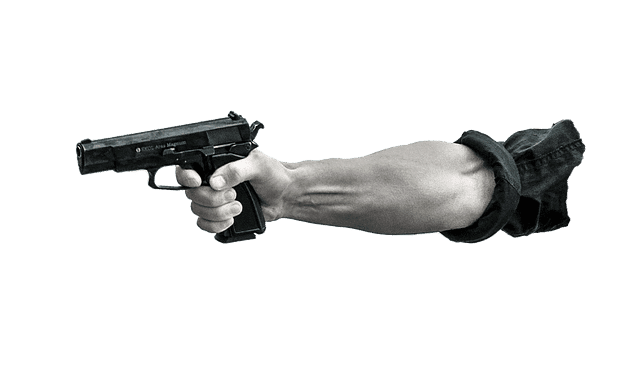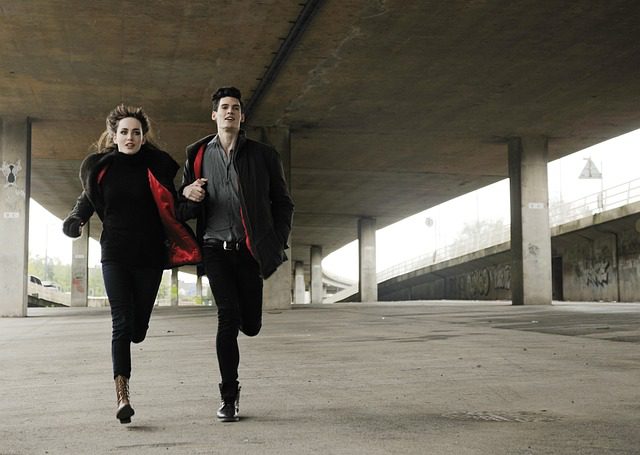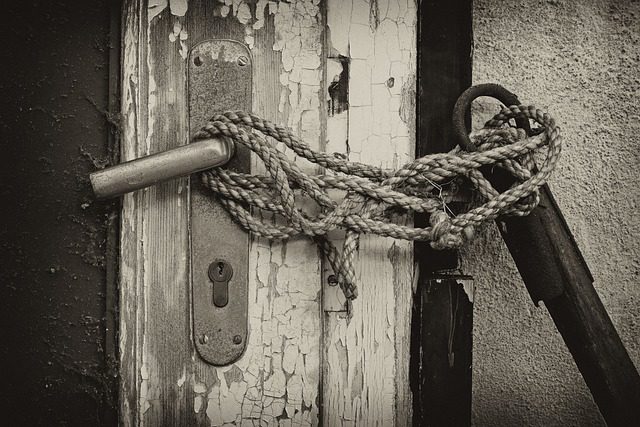Active Shooter Training: 3 Split-Second Lifesaving Options
It’s sad times when we actually need to be talking about active shooter training and what you should do in the event you find yourself in such a situation, but with mental health on the rise, people are doing some heinous things.
Now, it should be noted that this article is for informational purposes only and is in no way actual active shooter training, even though strategies are mentioned in the content. This is information that I’ve compiled through training, courses, and various educational information that I’ve sought out on my own. I highly recommend that you go out and take actual active shooter training with a professional firearms instructor (which I am not).
Table of contents
Active Shooter Training Should Not Be Optional
When your life is on the line, you will do anything to survive, right? Go get some active shooter training so that you can put yourself in the best position possible to either get off the X or eliminate the threat.
Related Article: Gun Violence in USA — Criminals Don’t Care About Your Gun Ban
With active shooter events taking place at a much higher rate these days, you need to understand what you can do in such a situation to help preserve not only your life but also those around you.

The information found in this active shooter training article is only the ground level in terms of things you need to think about — acting on them is a completely different set of skills you need to go get proper training on.
However, there are some things you need to think about and options that you have in such an event. So, what are the three main options you need to consider if you find yourself in an active shooter event?
- FIGHT
- FLEE
- BARRICADE
These three split-second lifesaving options need to be made instantly to possibly save your life and those around you. You need to be able to fully process what’s going on and what’s happening to decide what your plan of action is and then go execute that action.
In this article, where we are looking at active shooter training strategies for survival, we are touching on three options you have to choose from in order to give yourself a fighting chance of not becoming a victim. We will break down each below in more detail.
Related Article: The Psychological Effects of Using a Firearm for Self-Defense
It should be noted that an active shooter event may not allow for all three of the options below. You may only have one option to choose from, and you’ll need to be ready to execute on that single option. Additionally, your best option at the time may change as the event develops and as time passes. Be ready to pivot your plan of action dependent on the circumstance you’re currently faced with.
Next, let’s take a deeper look into each potential option.

1. FIGHT
When it comes to active shooter training strategies, this first option should only be used if you are physically able and willing to fight. For instance, if you’re a frail 87-year-old female that weighs 70 pounds, it’s probably not in your best interest to fight, or you’ll quickly be overpowered by the aggressor or active shooter. Know your capabilities and their limitations (which is why actual active shooter training with a professional is crucial).
If you are physically able and willing to fight, this will be the best way to potentially save lives. The faster you can put down and eliminate the active shooter, the better.
While carrying a firearm is your best solution to an active shooter, your unconstitutional state laws may prohibit you from carrying a firearm outside your home. In such a case, look around you and identify what potential weapons are nearby. These include knives, fire extinguishers, bats, chairs, bars, hammers, screwdrivers, metal objects, etc. (use your imagination as many items can be used as a force multiplier).
Should you be (legally) carrying a firearm, be willing and prepared to use it. If an active shooter is actively engaging innocent lives and you are in fear for your own, you have the right to engage the threat (be sure to check with your state and local laws to ensure they align with this, I’m not a lawyer and I’m not your lawyer).
Be aware of your surroundings and how to use them to your advantage. If you know a shooter is in another room, and they’d need to come through a doorway or down a hallway to get to you, set yourself up to be ready to take a shot the moment the active shooter enters the doorway or hallway (this is also known as a fatal funnel). Put yourself in the most strategic position possible (which you will also be taught when you take an active shooter training course with a professional).
Related Article: Are Online Concealed Carry Courses Actually Worth Taking?
If you have a visual on the active shooter, take advantage of their need to reload or if they have a malfunction to aggressively engage the threat. Also, be aware of your surroundings and what’s behind the threat to ensure you’re not putting lives at risk because every round you fire, you’re accountable for. This further illustrates why you need not only active shooter training but firearms training as well. If you fight, do you have a tourniquet on you (I did a full review of the SnakeStaff Systems ETQ)?

2. FLEE
Not everyone is able to fight. If you cannot fight or choose not to, get out of dodge. Only you can answer the questions in your head of whether or not you could have saved lives and chose not to. But again, some may not be up for the task if they don’t have proper active shooter training or even any firearms training at all. If this is you, get the heck out of there and to safety.
Look for both primary and secondary exits. Is there a door near you that you can get out of the area? Do you have a clear path to run where the active shooter cannot see you or engage you? In such an event, be willing to break things in order to survive. That means breaking a window to escape. Breaking a lock to get away. Do whatever is necessary to get to safety if you choose to flee. Active shooter training will help you better understand what you should be looking for when leaving the scene.

3. BARRICADE
Something that is taught and expressed in active shooter training is to barricade yourself in a safe area so that the active shooter cannot get to you. In some instances, this is your only option if you cannot flee or even fight at the time.
Let’s use an active shooter event in a school as an example. When you have hundreds of kids and faculty in a school, everyone is displaced, and exits can get blocked depending on where the active shooter is.
Related Article: SAVE A LIFE — Medical Training w/ Iron Forge Consulting Group
In such an instance, many are told to shelter in place and barricade themselves in a classroom. Use anything and everything you can to block entry into a space. In a school, this would mean desks, chairs, etc. Have a safety device that you can put on the arm of the door to prevent it from opening. Lock the doors. Turn off the lights. Use door wedges or door jams. They even have specific products out there for teachers to utilize on their classroom doors.
Some of these items that can be purchased include:
You also need to ensure you have a plan for if that door is breached and the active shooter gains entry. What do you have available to fight? Items around you can easily turn into weapons.
Something else to consider, and that is mentioned in active shooter training, is that you can still find an exit while you’re barricaded. Things such as doors leading outside from a room you’re in. Windows if you are on the ground level that you can crawl out of. Just because you’re barricaded does not mean you need to stay there.
Where Can You Go to Learn More About Active Shooter Training?
At the time of writing this, there are a few places that I know of that do actual active shooter training — not educational content like this article, where you still need to go out and get some proper training. Again, I want to emphasize that this article will never and should never replace actual active shooter training with a professional instructor.
All that being said, the four places I know of that touch on and have some active shooter training courses are:
I believe that all schools should look into getting someone into their facility to do active shooter training on-site. They should also pay to have armed security in each of their buildings. Don’t simply put something down on paper that you think will work — bring in a professional. Let the professional come in and help form a plan of action in the event that an active shooter tries to enter the building (whether they are successful in breaching an entry point or not).
Businesses should also consider bringing someone in for active shooter training. Allow the professional to walk around your building’s interior and exterior and help you understand areas you should consider fortifying to keep people out and your employees safe.
I firmly believe it’s better to have and not need than need and not have when it comes to active shooter training. If you never need to use it, consider that a blessing. But the moment you are faced with such an event, you’ll be glad you at least had some sort of active shooter training to know what needs to be done in those split seconds where every second counts.
Related Article: Should We Rethink Gun-Free Zones for Schools and Businesses?
Take the information from this article and start thinking about what you can do to preserve life in an event. What would you do? Obviously, the answer would depend on the scenario, your skill level, and whether or not you carry a firearm.
I cannot and will not tell you what you should personally do in such an event because every event is different and has a very particular set of circumstances. You cannot have a blanket plan if you encounter such an event.
Therefore, you truly need to understand the three options presented in this article to make the best choice, and you need to take a class to reinforce and roleplay what was said in this content, as it is a very basic overview of a very complex and dynamic problem.
As a side note to close out this article, if you want to support our website and are in need of any tactical gear (or any product for that matter), anything you purchase using our links below will provide us with a small commission. We don’t charge for our free content and our goal is to keep it that way. We don’t have a Patreon account to put things behind a paywall, nor do we sell pics of our feet on OnlyFans. If you choose to use the links below and make a purchase (at no additional cost to you), we greatly appreciate your support as it helps us continue to publish free content (like this article) on our website:
- Optics Planet (use code SAS5 at checkout for 5% off)
- Amazon
And if you have a product you would like us to check out and potentially review, please contact us and let’s discuss.


*Disclosure: This article may contain affiliate links or ads, which means we earn a small commission at no extra cost to you if you make a purchase through these links. These commissions help support the operation and maintenance of our website, allowing us to continue producing free valuable content. Your support is genuinely appreciated, whether you choose to use our links or not. Thank you for being a part of our community and enjoying our content.
PLEASE CONSIDER SHARING THIS ON YOUR SOCIAL MEDIA TO HELP OTHERS LEARN MORE ABOUT THIS TOPIC. SIMPLY CLICK BELOW!

